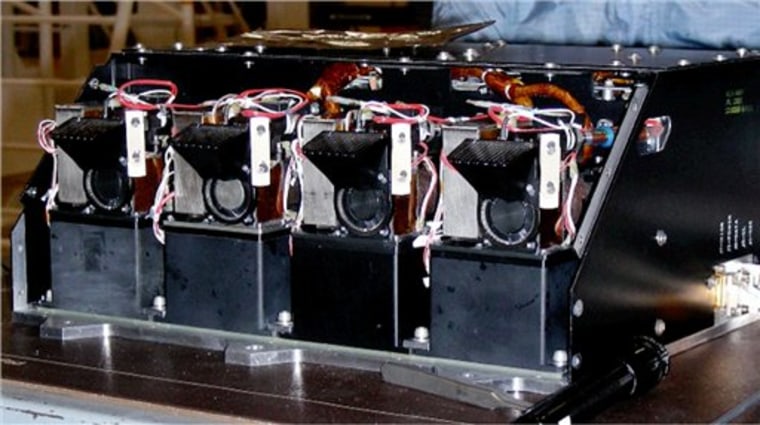The Phoenix lander's first taste test of soil near Mars' north pole reveals a briny environment similar to what can be found in backyards on Earth, scientists said Thursday.
The finding raises hope that the Martian arctic plains could have conditions favorable for primitive life. Phoenix landed a month ago to study the habitability of Mars' northern latitudes.
"There's nothing about it that would preclude life. In fact, it seems very friendly," mission scientist Samuel Kounaves of Tufts University said of the soil. "There's nothing about it that's toxic."
Phoenix so far has not detected organic carbon considered an essential building block of life. Last week, the lander found evidence of ice below the soil. Scientists generally agree that liquid water, a stable energy source and organic, or carbon-containing, compounds are required for a habitable zone.
The latest experiment was designed to test for minerals that do not have carbon in them. Earlier this week, Phoenix's 8-foot-long robotic arm delivered a pinch of dirt dug up from near the surface to its onboard lab.
Like a chemist, the spacecraft mixed the soil with water brought from Earth into a beaker the size of a teacup and stirred it. Sensors inside the beaker detect the soil's pH and probe for traces of the nutrients.
Preliminary results showed the soil had a pH between 8 and 9, researchers said. A pH less than 7 means the solution is acidic, while a pH over 7 means it is alkaline. Phoenix also detected the presence of magnesium, sodium, potassium and chloride in the mixture.
"It's very typical of the soil here on Earth minus the organics," Kounaves said during a teleconference from Tucson, Ariz.
On Earth, asparagus, green beans and turnips could be planted in such an environment and chemical-loving bacteria would thrive there, he said.
Planetary scientist David Paige of the University of California, Los Angeles, said it is too early to tell whether the minerals found in the soil could support life. Paige, who had no role in the mission, said the find was not surprising because rocks weather over time and bits of minerals mix with the soil.
"There are a lot of outstanding questions about the composition of the soil," he said.
Mission scientists said another experiment that heated the soil to high temperatures and sniffed the gas found traces of water vapor.
"This soil clearly has interacted with water in the past," said William Boynton of the University of Arizona, Tucson.
The heating experiment, which was designed to look for organics, did not yield conclusive evidence of carbon. Scientists planned to study another soil sample taken from further below the surface.
